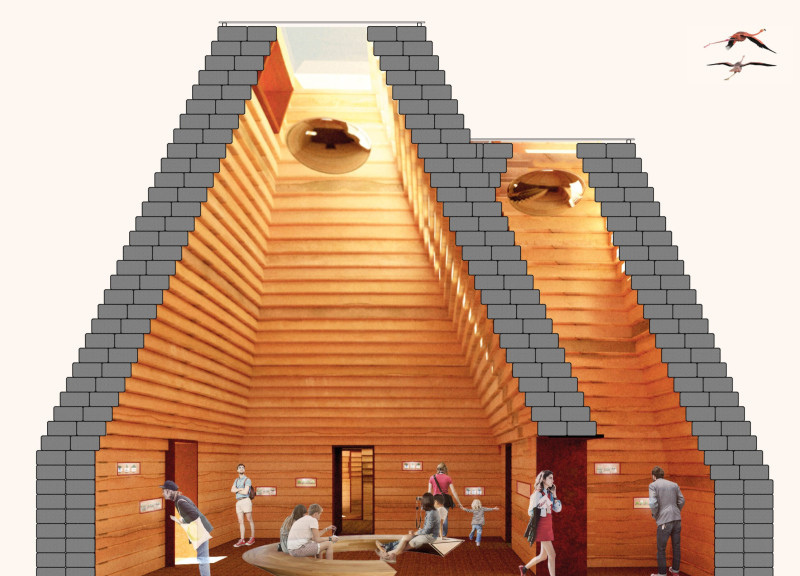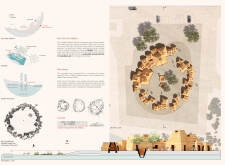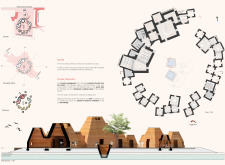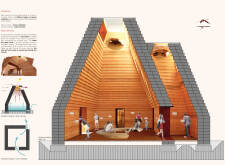5 key facts about this project
The Al Wathba Wetland Reserve is located in Abu Dhabi and functions as an ecological and educational space. It engages visitors with the unique geological characteristics of its environment. The design emphasizes the natural process of crystallisation found in the sabkha, inspiring buildings that resemble salt crystals rising from the earth. This approach aims to merge the built structures with the landscape, allowing visitors to learn about the diverse ecosystems that inhabit the wetland.
Architectural Concept
The design centers on the idea of integrating the built environment with natural elements. The formation of the buildings reflects the crystallisation process, creating a direct connection between architecture and the landscape. The circular layout not only protects the site from harsh winds but also enhances views of the wetlands, encouraging a deeper appreciation of the surroundings.
Spatial Organization
The project features distinct pathways for vehicles and pedestrians, enhancing movement while reducing impact on the ecosystem. Visitors are guided through thoughtfully arranged spaces designed for exploration and interaction. Main areas such as waiting and display sections are carefully positioned to promote engagement with both the architecture and the ecological narrative of the wetland.
Materiality
Materials chosen for construction play a significant role in promoting sustainability. Corten steel is used for window and door frames, providing durability without requiring much maintenance. Rammed earth forms the primary material, offering high thermal mass and helping regulate humidity within the spaces. The flooring comprises dark wooden planks, providing a visual contrast while allowing for ventilation by being raised off the ground.
Design Features
A central aspect of the design is the inclusion of two wells that allow visitors to observe changes in the water table. This feature highlights the importance of water management in maintaining biodiversity in the wetland. Overall, these details reflect a commitment to ecological education and strengthen the connection between the structures and the natural environment.






















































